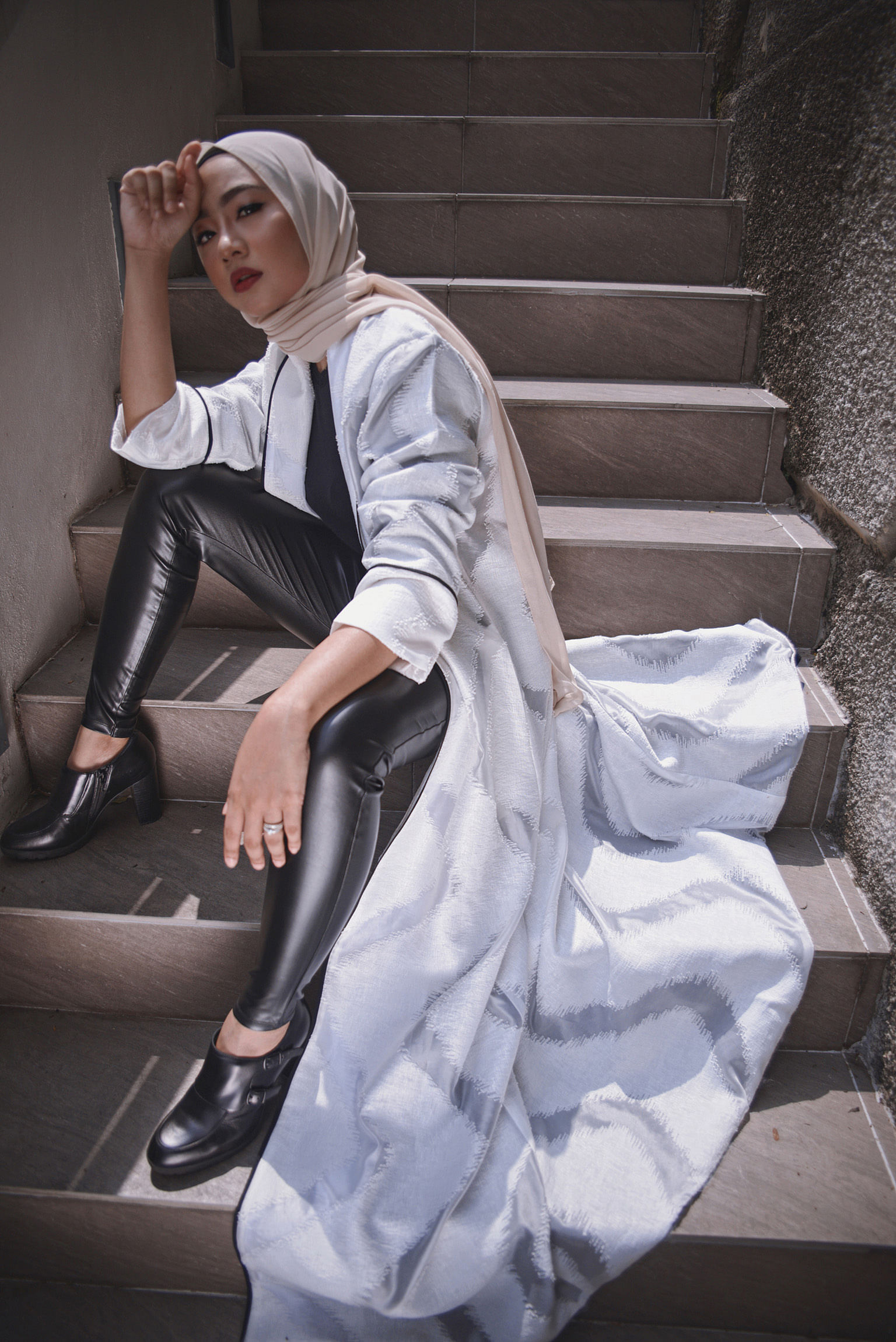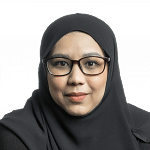Malaysian engineer Aliaa Mohd Sharizan likes to keep ahead when it comes to fashion.
In a country where most Muslim women wear a headdress, the fashionable 36-year-old has several thousand dollars' worth of headscarves from two brands that have taken Malaysia by storm - dUCk and Naelofar Hijab.
The brands are riding the wave of a phenomenon called "modest wear" that is sweeping the world. Modest wear aligns with contemporary fashion but is geared to the needs of Muslim women, offering style and diversity.
The numbers show just how popular they are: Muslim women spent US$44 billion (S$58.4 billion) in 2015 on modest wear, according to the 2016-2017 State of the Global Islamic Economy Report (Gier). It was the first time this report, the latest available, included estimates on spending on modest wear.
The report is put out by global knowledge service provider Thomson Reuters and the Islamic Corporation for the Development of the Private Sector. A total of 172 participants in the modest-wear industry were surveyed on their sector's performance.
The US$44 billion represents the amount of spending by women over age 14 on modest apparel, excluding footwear.

"The clothing may be modest, the success is anything but," says the report.
In recent years, Malaysia has emerged as one of the global trendsetters in modest wear. Women there are also embracing the wearing of Islamic-suitable cosmetics.
Muslim fashion gained a serious foothold in the last five years after several public figures, especially popular blogger and entrepreneur Vivy Yusof, were spotted pairing fashionable get-ups with matching headdresses.
So what is Islamic modest wear? Its fans say they want to obey the Islamic style of dressing for women by covering their heads, necks, arms and legs - but in a fashionable way that is in addition to the traditional black, loose abayas and headgear.
Helping fuel the interest in modest wear is the wide presence of social media, with its visuals providing the opportunity for Muslim women to become more fashion-conscious and to represent themselves through their choice of wardrobe.
Blogger Vivy and her husband Fadza Anuar spotted the new opportunity after first setting up a one-stop independent online and beauty retailer, FashionValet, in 2010. Four years later, aware of her strong following, Ms Vivy continued to spread her wings by launching a line of luxury headscarves called dUCk.
Malaysian actress and model Noor Neelofa Mohd Noor is also among those who saw the potential in modest wear. She launched Naelofar Hijab, a line of trendy headscarves, in 2014.
"When I first started covering up, I found there weren't many hijabs available in Malaysia that suited my style," she told The Straits Times. "So I figured I might as well come up with my own line."
In the first year of operation in 2015, sales of Naelofar Hijab headscarves hit RM50 million (S$16.6 million), exceeding twice its initial target, said Neelofa, 28. Sales last year jumped by 30 per cent compared with 2016, she added.
"The brand has changed from selling the hijab as a product, to a lifestyle or as an experience," said Neelofa, referring to her line of instant, pinless hijabs.
'Naelofar Hijab headscarves are sold online and at some physical outlets, including its flagship store in Kuala Lumpur. To date, the brand has over 100 stockists, including in Singapore.
"We fully utilise social media in marketing Naelofar Hijab. I think this is our best strategy. We reach so many people via my personal Instagram and also Naelofar Hijab's Instagram accounts," she said.
-
US$44b
About S$58 billion is spent by Muslim women in 2015 on modest wear, according to the State of the Global Islamic Economy Report.
RM50m
About S$16.6 million in sales of Naelofar Hijab headscarves in the first year of operation in 2015, double its initial target. Sales last year jumped by 30 per cent compared with 2016. Nadirah H. Rodzi
While modest wear is increasingly gaining fans in Malaysia, it is not cheap.
Naelofar Hijab scarves are between RM50 and RM100 a pop, and those from dUCk are typically between RM130 and RM800. In contrast, a typical headdress can be bought from street vendors in Kuala Lumpur for just RM10.
These expensive brands cater mostly to fashionistas and professional workers who do not mind spending a huge amount on modest wear.
Contributing to the hefty price tags are the use of unique designs and luxe materials such as satin and silk. For instance, the limited-edition Swarovski KL dUCk scarves feature a detailed print of the capital's iconic skyline in a pastel pink shade, adorned with 200 crystals. In comparison, most street vendors and small-scale modest-wear business operators use standard chiffon and cotton materials in producing their headscarves.
But Muslim fashion-lovers, such as Ms Aliaa, do not seem to mind the high prices. "If I can afford a Chanel handbag, why shouldn't I spend a little more on something that is chic and affirms my beliefs?" she said, adding that she sets a budget limit of RM800 for a headscarf.
Internationally, several retailers and big names in fashion have also ventured into the modest-wear industry. Italian luxury fashion house Dolce & Gabbana launched a collection of ankle-length dresses with matching embroidered headscarves and hijabs in 2016.
Fitness brand Nike launched its first Pro Hijab line for Muslim women athletes last year. Other brands such as DKNY, Tommy Hilfiger, Zara and Mango have brought out special collections of modest wear during Ramadan in recent years.
Popular Japanese fashion chain Uniqlo in 2015 collaborated with British-born Muslim designer Hana Tajima to unveil a collection of hijabs. In a video advertisement the same year, Swedish retail giant H&M also featured a Muslim model donning a hijab, although it does not specifically carry modest wear in its stores.
Amid this, Malaysian designers are making their mark, including Mimpikita and Ainee Suhaidi who have graced international runways - such as London Fashion Week 2015, Vancouver Fashion Week and Istanbul Modest Fashion Week in 2016 - to showcase their lines of modest wear.
"The Ainee Suhaidi women are independent, bold and classy... it's not just being confident, it's also about feeling good about yourself," Ms Ainee said.
"For me, modest wear boils down to an elegant manner of covering what needs to be covered."
Like dUCk, Ainee Suhaidi's Primadona collection showcases urbanised twists on tradition. For example, it has pieces inspired by songket, a woven patterned fabric prevalent in many traditions in South-east Asia - mainly in Malaysia and Indonesia.
The modest-wear fashion industry, however, is not without its critics. The late fashion mogul Pierre Berge, business partner of French fashion designer Yves Saint Laurent, in March 2016 slammed designers of Islamic clothing and headscarves, accusing them of taking part in the "enslavement of women".
He was quoted by Agence France-Presse as saying: "Creators should have nothing to do with Islamic fashion.
Designers are there to make women more beautiful, to give them their freedom, not to collaborate with this dictatorship which imposes this abominable thing by which we hide women and make them live a hidden life."
Despite such comments, the Muslim modest-fashion industry continues to bloom globally.
London hosted its first Modest Fashion Week in February last year, featuring more than 40 labels showcasing styles that ranged from maxi dresses to hijabs.
For Ms Laili Husin, the growth of modest wear has also rekindled her love for fashion.
"I was in my 30s when I started donning the scarf and there were not many options for modest wear and halal make-up. " said Ms Laili, 57, who is a Malaysian working as a senior manager of a property development company.
"All I have to do now is point and pay," she said, referring to buying modest wear online. So far, she has spent RM10,000 on dUCK and Naelofar Hijab scarves .
Besides modest wear, halal cosmetics - both make-up and skin care - is another growing market in Muslim fashion.
Halal, which means "permissible" in Islam, prohibits the consumption of, or having traces of, pork or lard, alcohol and blood. Products that contain one or more of these ingredients are considered forbidden, or "haram".
There is also demand for wudhu-friendly, or prayer-friendly, cosmetics in recent years. These cosmetics do not contain ingredients that can create thin barriers between water and the skin during ablutions. In performing the purification process before performing each prayer, water must reach several body parts.
Also marketed as "breathable" and "prayer-safe", most wudhu-friendly cosmetics do not contain "barrier ingredients" such as silicone and beeswax. Polish cosmetics giant Inglot in 2013 also introduced its first "breathable" nail lacquer, which is made from special polymers meant to allow air and water vapour to pass through.
According to the Gier report, Malaysia is currently ranked second on the Halal Pharmaceuticals and Cosmetics indicator in terms of consumption after the United Arab Emirates.
Indeed, Ms Raeesa Sya, 28, who founded Orkid Cosmetics in February last year , which features a line of RM39 liquid lipsticks that are halal, said: "The Muslim community is growing fast and we feel that in (the) beauty (industry), they are severely under-represented."
Accountant Zakiah Ahmad Nazir, 27, of Petaling Jaya, said she prefers to stick to halal and wudhu-friendly cosmetics as removing make-up before each prayer is "troublesome" and "time-consuming".
"Apart from it giving me peace of mind, I like using it because it gives me the confidence to wear it during prayers, and these cosmetics are not that expensive," she said.


